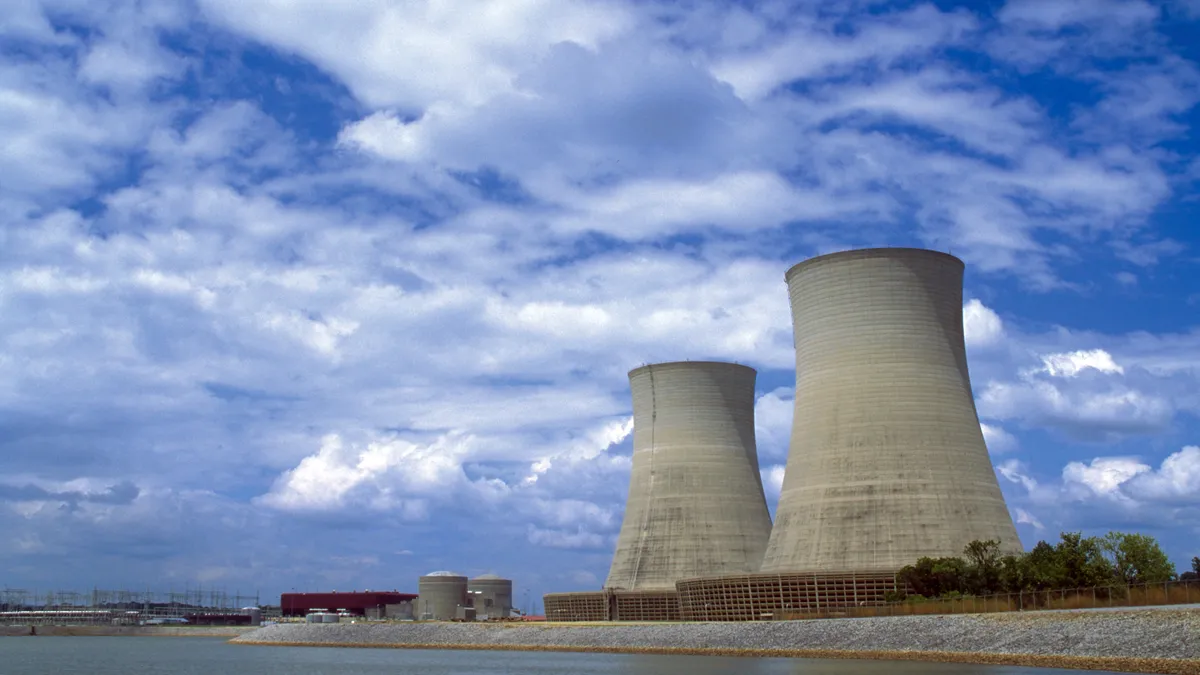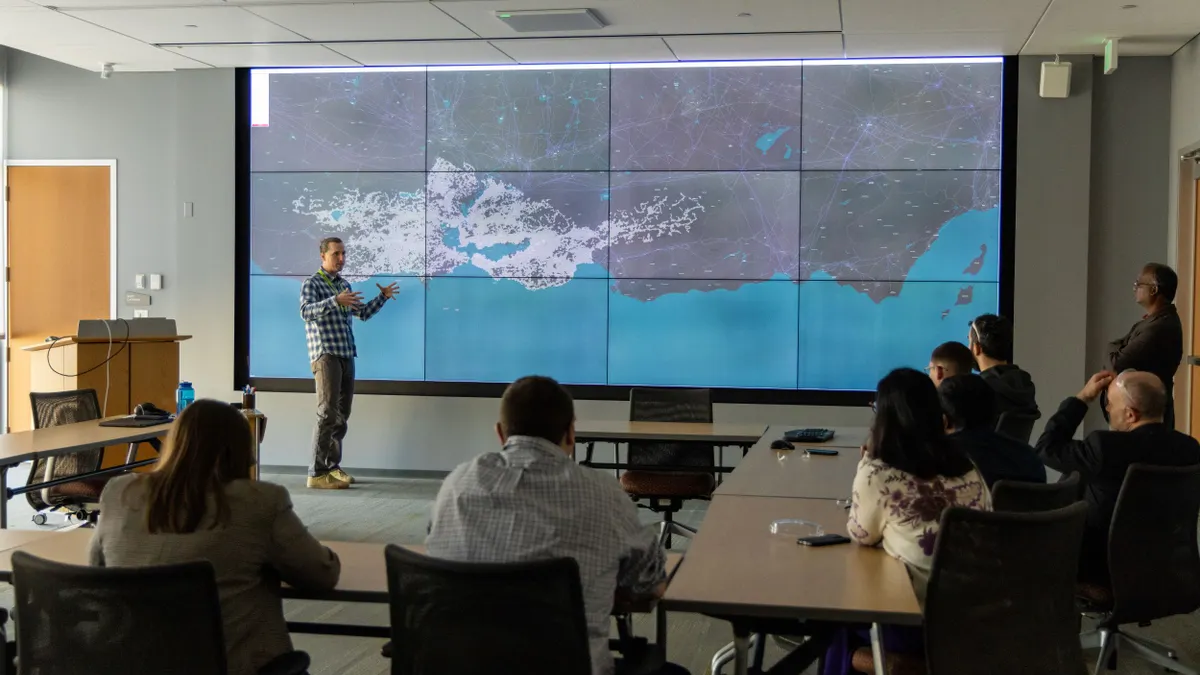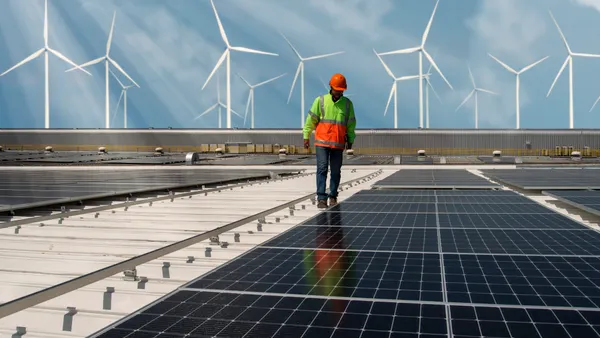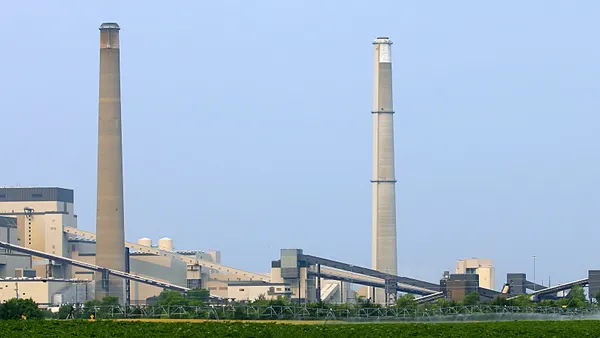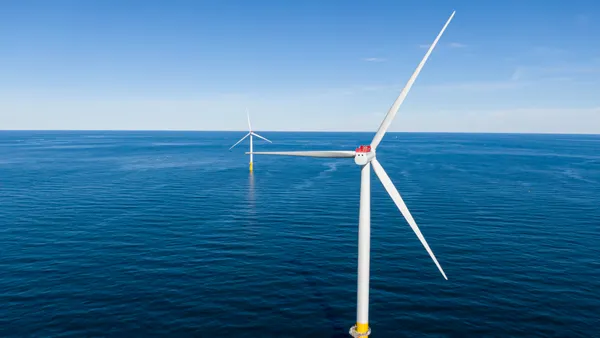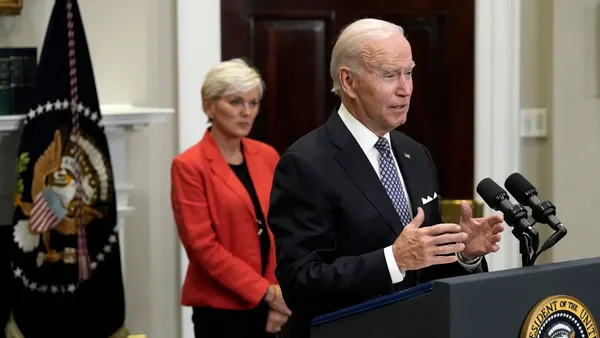Dive Brief:
- CenterPoint Energy took a step toward its first networked geothermal pilot in Minnesota this month by selecting Resource Innovations and Salas O’Brien to support site selection and a feasibility study, the Texas-based electric and natural gas utility said.
- CenterPoint has been gauging local governments’ interest in collaborating on the pilot since its launch late last year. The company said it expects to conduct siting and modeling work to identify a preferred site over the coming months.
- The networked geothermal pilot is one of 17 pilot projects and seven research and development efforts CenterPoint is pursuing as part of its first five-year innovation plan submitted under Minnesota's Natural Gas Innovation Act, the utility said. Other initiatives involve renewable natural gas, green hydrogen and hybrid gas and electric heating systems.
Dive Insight:
A networked geothermal system is a type of thermal energy network that can heat and cool multiple buildings in a campus, neighborhood or mixed-use district. Using the relatively constant temperature of the earth as a heat source and sink, they transfer heat through underground water pipes and a network of heat pumps, CenterPoint said.
When powered by renewable or low-carbon electricity, networked geothermal systems can effectively decarbonize building climate control.
Municipalities and institutions have used thermal energy networks — also known as district energy systems — for decades in North America, Europe and other parts of the world. But U.S. utilities have been relatively slow to adopt the technology. Eversource Energy commissioned the United States’ first utility-owned networked geothermal system last year in Framingham, Massachusetts.
Massachusetts is one of at least eight states, including Minnesota, that Climate Xchange says have enacted policies supporting thermal energy network development. California, Colorado, Maryland, New York, Vermont and Washington and have similar policies, Climate Xchange says.
Minnesota enacted the Natural Gas Innovation Act in 2021. The law “creates a new regulatory framework for natural gas utilities to invest in renewable energy resources and innovative technologies,” according to CenterPoint.
“This pilot project is an opportunity, as we see it, to learn a lot about these types of systems,” said Emma Ingebretsen, CenterPoint manager of NGIA and decarbonization projects.
Ingebretsen said CenterPoint “is continuing to engage with communities and did get some interest” in the pilot but did not name any potential customers. The innovation plan the Minnesota Public Utilities Commission approved last year envisions the pilot system operating by the end of the plan’s five-year term, she added.
Ingebretsen said the siting and feasibility study process will first “take a high-level look … for ideal sites” in communities that have expressed interest in the pilot, then do more in-depth costing and impact analyses on a smaller group of possibilities. Promising locations would likely feature a mix of residential, commercial and public buildings with balanced energy loads, possibly oriented around an “anchor customer” with significant energy needs, she said.
“Having a strong anchor customer at a site is going to be one of the key pieces we look at to get down into the [narrower] set of sites” that come in for detailed analysis, Ingebretsen said.
CenterPoint also offers incentives, including rebates, to partially offset research, installation and operational costs for commercial and industrial customers considering networked geothermal systems. As with the pilot project, the “ideal customer location would include multiple buildings in one area, such as on a campus or complex,” Ingebretsen said.
Ingebretsen suggested those incentives could help CenterPoint retain larger customers with ambitious decarbonization goals. The city of Minneapolis, for example, aims to be carbon-neutral by 2050 and to source all of its electricity from renewables by 2030. Minneapolis is located in Hennepin County, which hopes to reduce greenhouse gas emissions by 45% in 2030 and reach net zero by 2050.
CenterPoint is “seeking opportunities to work with current customers to decarbonize their existing district energy systems,” again offering rebates to offset the cost of studying and implementing “strategic electrification, energy efficiency, low-carbon fuels or other greenhouse gas reduction technologies,” Ingebretesen said.
CenterPoint’s Minnesota trade area has several district energy networks, including a 15-building steam and chilled-water loop serving a major healthcare complex and other users in downtown Minneapolis. Hennepin County, which owns the system, is electrifying some equipment on it and investigating the feasibility of swapping renewable natural gas for fossil gas down the road — though financial and logistical barriers have complicated those efforts in the short term, officials said earlier this year.





